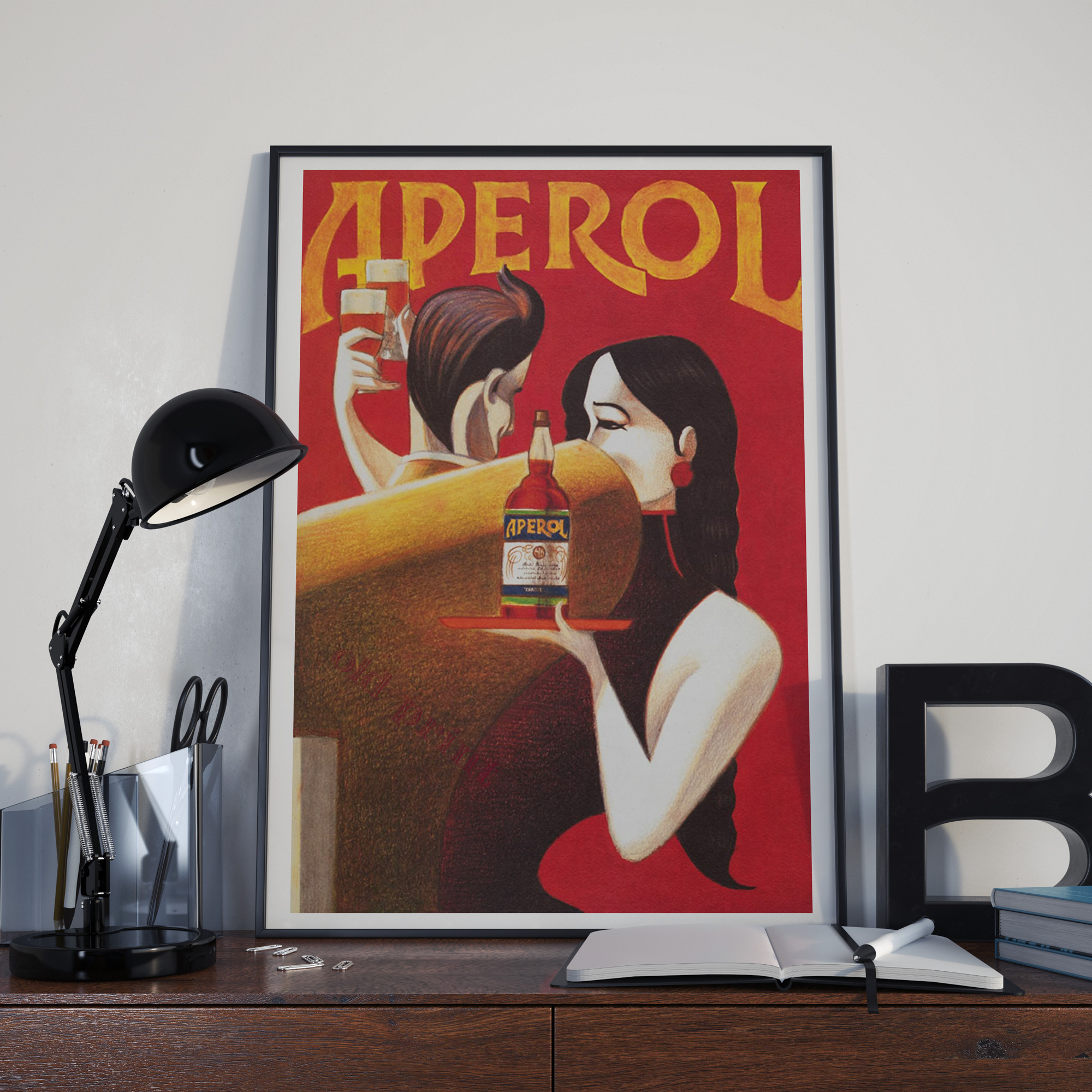The Seven-Poster Malév Series by Máté András: Your Questions Answered
A Q&A guide to one of the most beautiful mid-century airline poster sets ever created
If you’re a lover of vintage travel posters, chances are you’ve come across the colourful and captivating work of Máté András for Malév Hungarian Airlines. Designed in 1966–1967, this seven-poster series has become one of the most recognisable sets in European airline advertising.
Below, we answer the most common questions collectors and design enthusiasts ask about this iconic series.
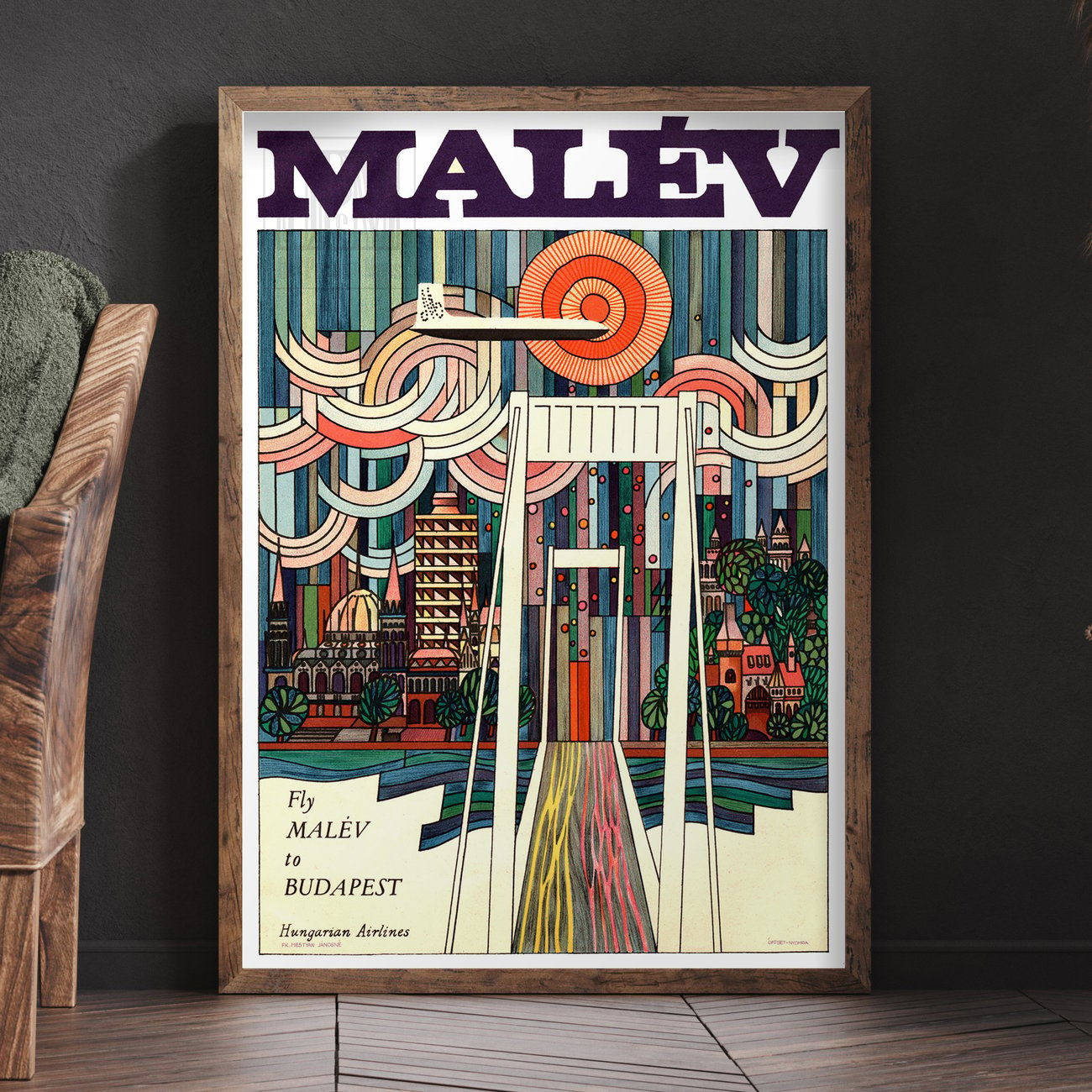
Malév Budapest poster by Máté András with modernist rainbow illustration
Who was Máté András?
Máté András was a Hungarian graphic artist active during the mid-20th century, known for his modernist approach and clean, vibrant compositions. His work for Malév Hungarian Airlines represents the pinnacle of his design career, combining simplicity, colour, and symbolic imagery in a way that still feels fresh today.
What makes this Malév poster series so famous?
The series stands out because it combines:
- Bold geometric shapes
- Rainbow-bright colours
- Minimalist depictions of each destination
- Perfect mid-century balance between art and advertising
Each poster is instantly recognisable from across a room, making the series hugely popular among collectors, aviation historians, and interior designers.
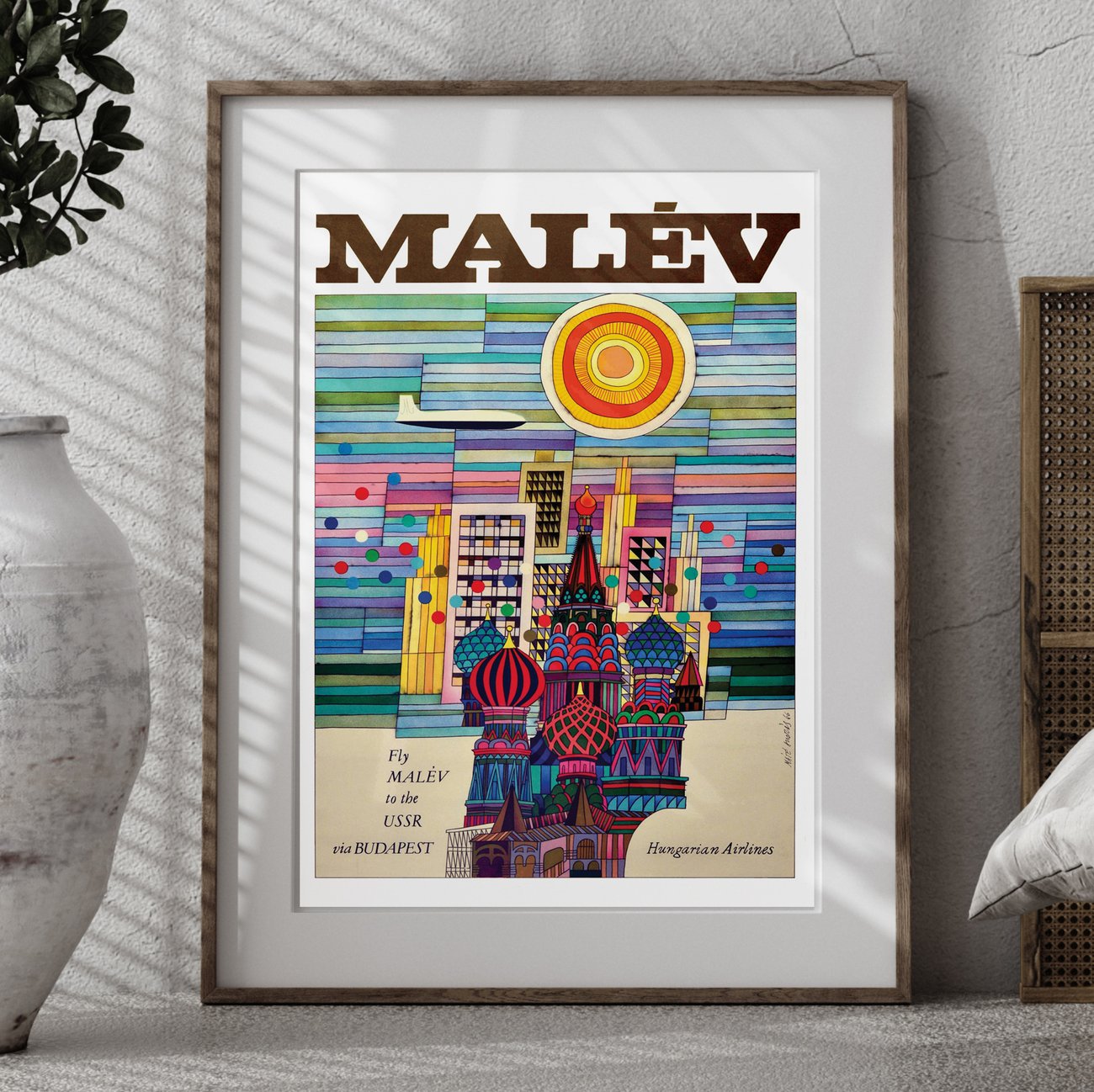
Vintage Malév poster by Máté András showing Moscow’s St. Basil’s Cathedral in bright rainbow colours
How many posters are in the series?
Although Malév commissioned many posters over the years, the Máté András campaign consists of seven coordinated designs created between 1966 and 1967. Auction houses and Hungarian museum catalogues consistently refer to it as a seven-poster set.
What destinations are represented in the seven posters?
The confirmed destinations in the series include:
- USSR (Moscow)
- Budapest
- Middle East
- Scandinavia
- Europe / European Cities
- Mediterranean / Greece / Aegean
- Additional regional route (varies by edition; sometimes listed as Africa, Asia, or another region)
These designs were created to highlight Malév’s expanding route network and to position the airline as modern, colourful, and outward-looking during the 1960s.
Why do some posters have different titles?
Several posters in the series appear under variant titles across shops, auctions, and museum databases. For example:
- The Mediterranean design is sometimes labelled Greece, Aegean, or Mediterranean.
- The regional destination poster may be labelled Africa, Asia, or simply Regional Route.
This happened because Malév issued regional-language versions and because later sellers often simplified titles for their buyers.
The artwork, however, is unmistakably part of the same unified visual series.
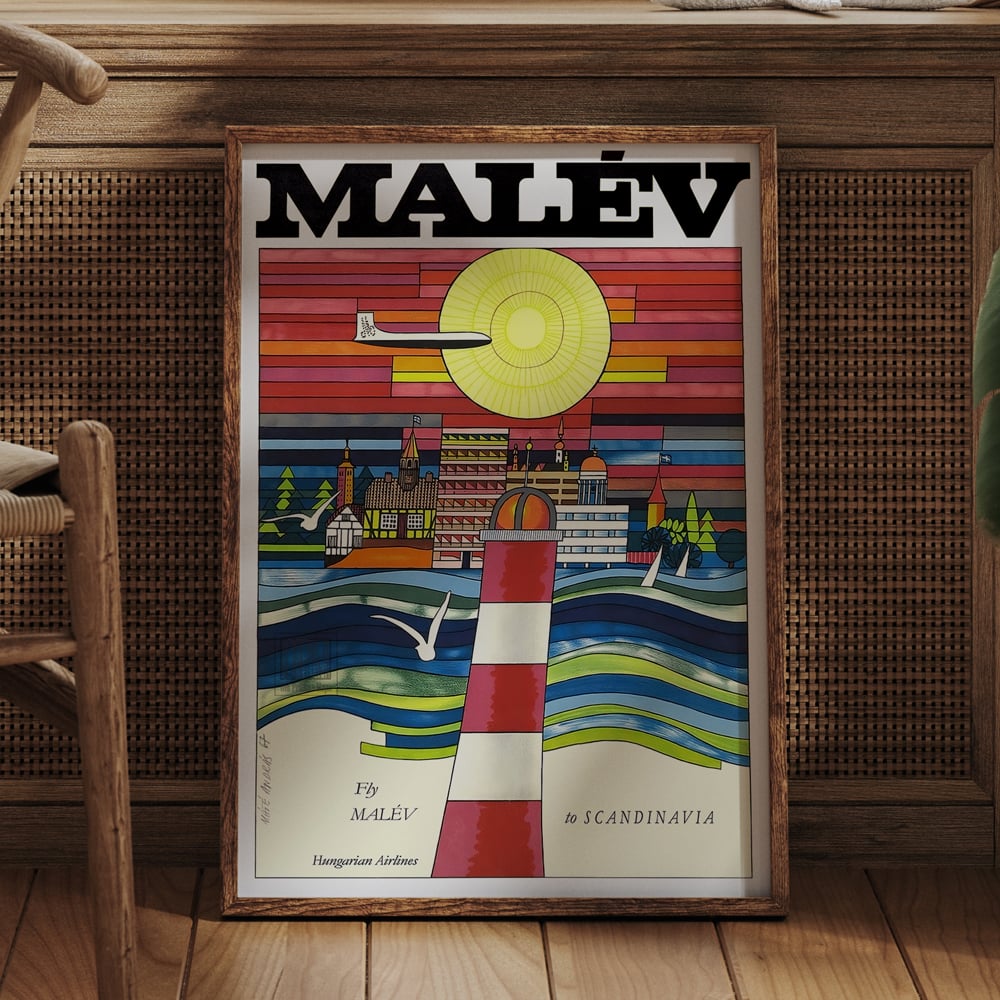
Malév Scandinavian destination poster by Máté András in bright geometric colours
When were these posters created?
The seven posters were created around 1966–1967, during a major branding refresh for Malév. The designs reflect the optimism and internationalism of the era, both in Hungary and in commercial aviation more broadly.
What is special about the design style?
The series exemplifies key traits of 1960s European graphic design:
- Modernist minimalism
- Playful geometric symbolism
- Saturated rainbow gradients
- Strong, flat colour planes
- Clarity at a distance — ideal for travel agencies and terminals
The result is a timeless visual identity that feels both retro and contemporary.
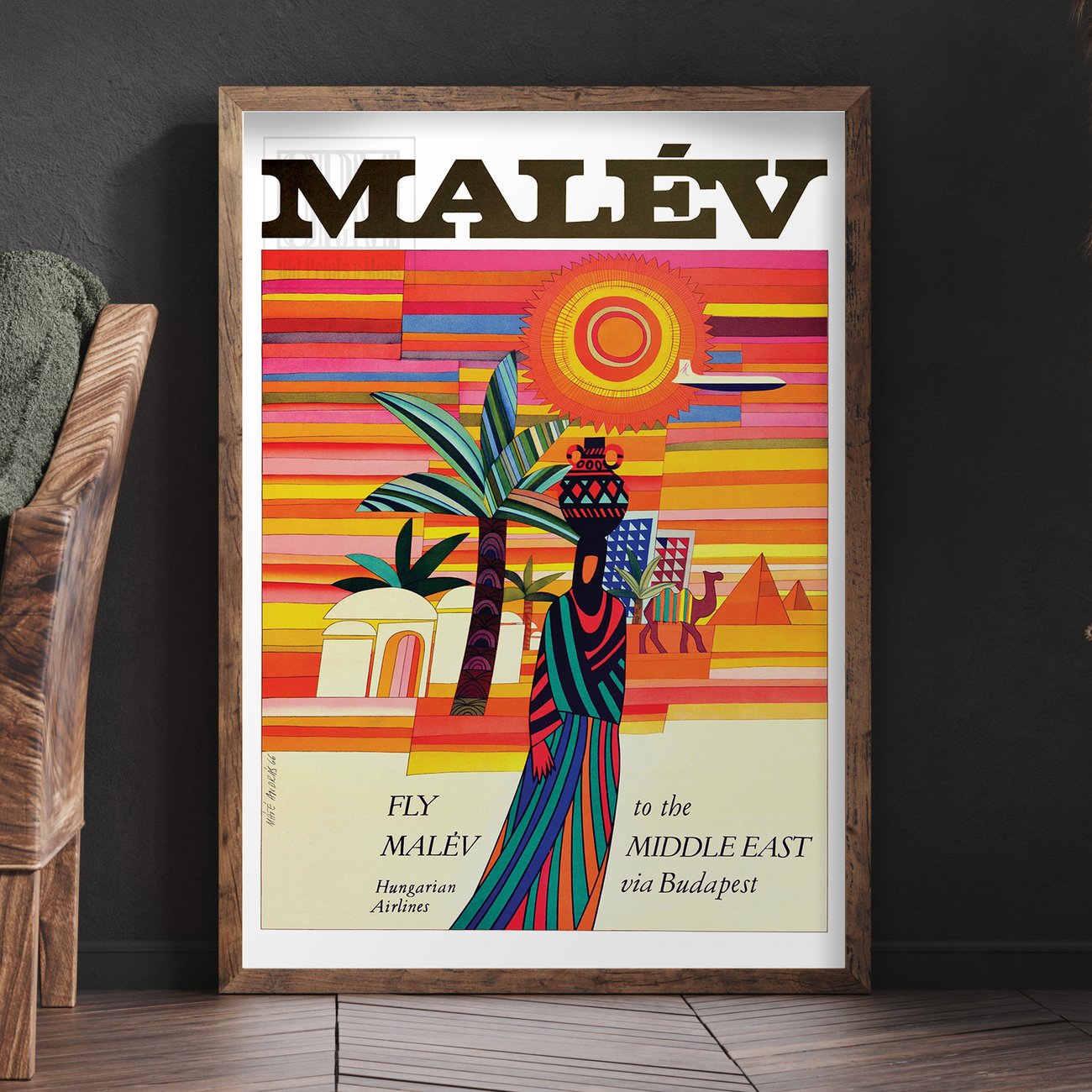
Vintage Malév poster by Máté András with desert landscape and stylised Middle East motif
Are these posters rare?
Original prints are increasingly rare and highly collectible. Auction records show strong demand for Máté András’s Malév posters, especially the USSR, Budapest, and Mediterranean designs.
High-quality reproductions allow collectors and design lovers to enjoy the artwork without the cost (or fragility) of original prints.
Why do collectors love this series?
Because it is:
- Visually iconic
- Historically significant
- Representative of Cold-War-era aviation and design
- A complete but varied set, perfect for display
- A masterpiece of mid-century Hungarian graphic art
For many, the series is one of the finest examples of airline poster design ever produced in Eastern Europe.
Can these posters be displayed together as a set?
Yes — and they look spectacular as a group.
Because the colour palettes harmonise so well, many collectors hang:
- all seven together
- a matching pair (e.g., USSR + Budapest)
- a trio (e.g., Europe + Scandinavia + Mediterranean)
The designs complement minimalist, Scandinavian, industrial, or modern interiors beautifully.
✈️ Final Thoughts
The seven-poster Malév series by Máté András is not just advertising — it is art.
These posters capture a moment when travel was full of excitement, colour, and possibility. Whether you’re a collector, a design enthusiast, or simply someone who loves beautiful mid-century artwork, this series remains one of the most compelling and joyful poster sets ever created.
***
How to drink Campari?
Campari-Soda
Just cut an ounce or two of Campari with soda and you will get a very refreshing drink and not too strong. Campari itself is relatively low in alcohol (24% alcohol by volume). The flavor is crisp and mildly bitter, with lightly spicy flavors. You can add a squeeze of lemon or orange juice because Campari's flavors marry well with citrus.
Campari-Soda-Franz-Marangolo-1968-vintage-wall-art-print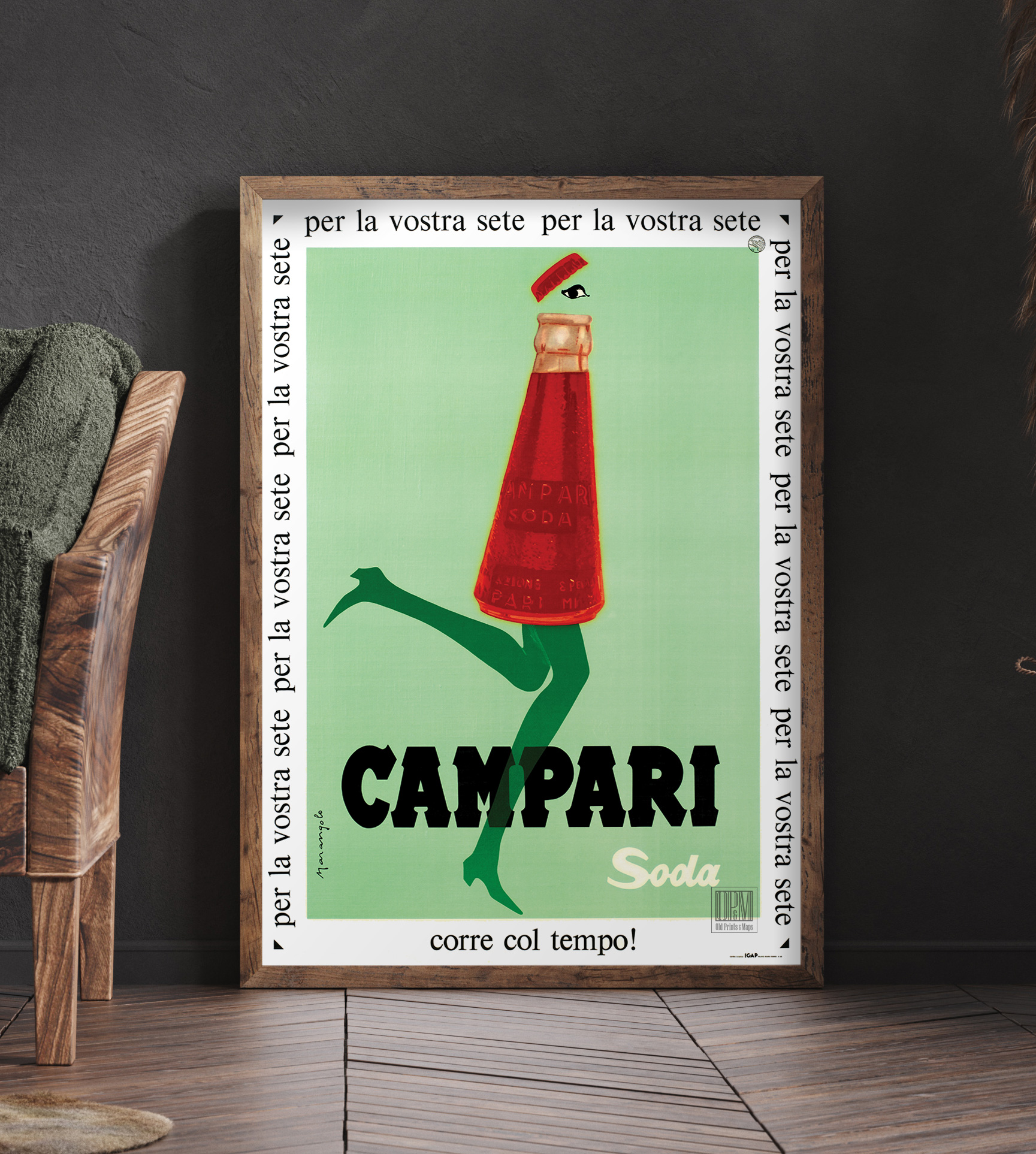
Aperol is an Italian aperitif with scents of orange and rhubarb as the dominant flavors and other herb infusions that complete its character. It has a bright distinctive orange color, and the taste starts sweet but ends with a pleasant bitterness.
Aperol, like other apéritifs, is meant to stimulate the appetite and is typically consumed before dinner. Aperol is perhaps best known as the star ingredient of a popular cocktail, the Aperol Spritz.
Aperol Spritz cocktail Recipe :
3 parts Prosecco , 2 parts Aperol and 1 splash of soda water.
This beautiful Aperol Poster called "Rendez-vous" was designed by Lorenzo Mattoti
Aperol "Rendez-Vous" | Lorenzo Mattotti | Vintage Ads | Wall Art Print | Vintage Poster | The Vintage Poster ShopAperol "Rendez-Vous"